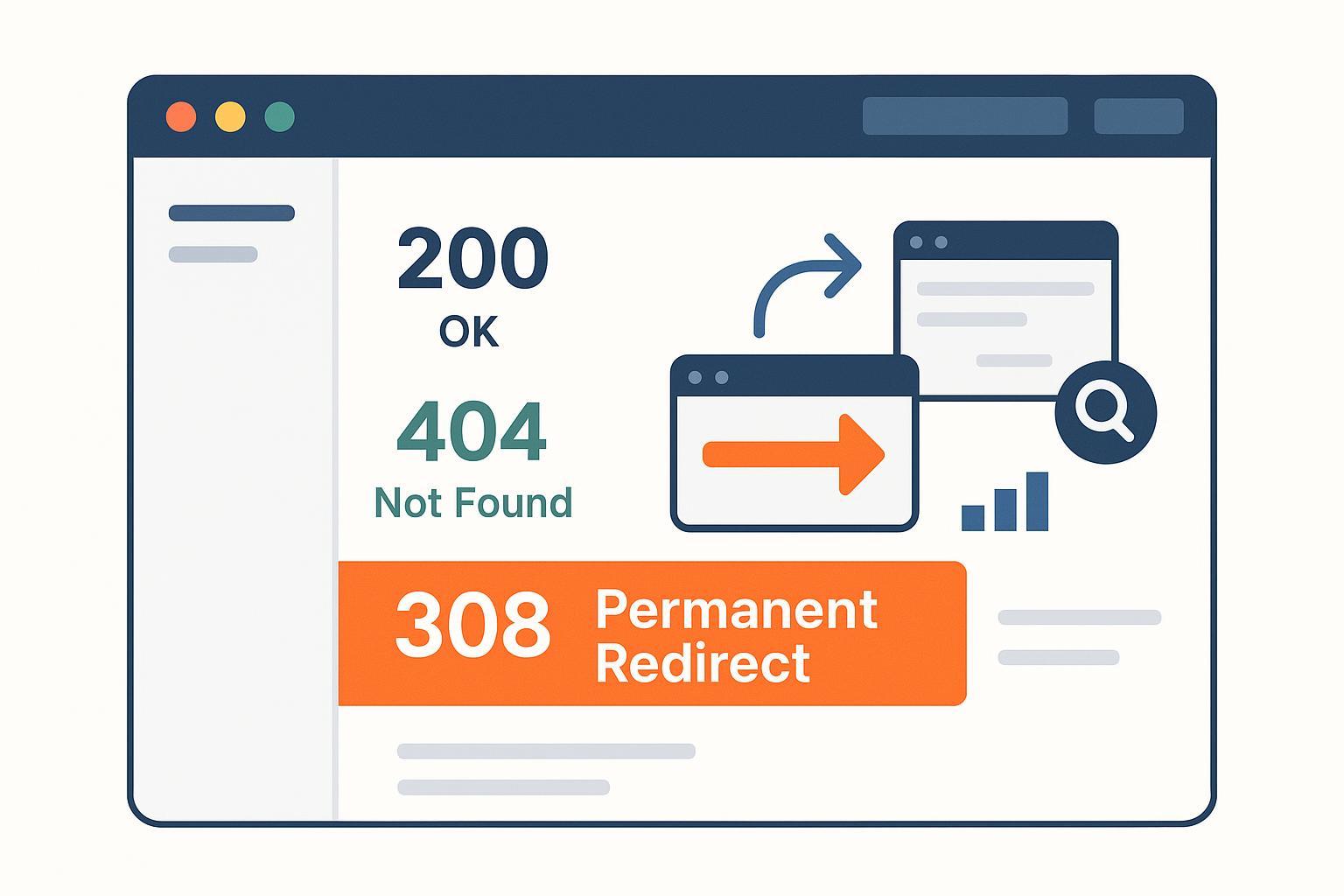Understanding HTTP Status Code 308: The Permanent Redirect Explained

What is HTTP Status Code 308?
HTTP Status Code 308 (Permanent Redirect) is a response sent by a server to indicate that a requested resource has been permanently moved to a new URL. Unlike other permanent redirects, 308 ensures that the original HTTP request method (such as POST or PUT) and its payload are preserved during redirection—as standardized in RFC 7538.
In-Depth Explanation
When a web browser, search engine, or API client receives a 308 redirect, it must automatically resend the original request (method and body) to the new location specified in the Location header. This is crucial for modern web applications that handle sensitive actions—like submitting forms, processing payments, or changing user settings—because it prevents accidental data loss or unexpected behavior sometimes seen with older redirect codes, particularly 301.
How Is 308 Different from Other Redirects?
The key innovation of HTTP 308 is method preservation:
- 301 Moved Permanently: Can change non-GET requests (like POST) into GET, potentially causing lost data.
- 307 Temporary Redirect: Preserves methods, but is intended for temporary moves.
- 308 Permanent Redirect: Like 307, but permanent and guarantees no method alteration.
Such distinctions are especially relevant for SaaS, content, and e-commerce platforms undergoing migrations or rebranding, where both user experience and SEO must be protected.
Key Components
- Permanence: Communicates an enduring address change, prompting search engines to update their indexes.
- Method Preservation: Ensures the original request type (POST/PUT) and its payload aren’t altered.
- Standardization: Defined by RFC 7538 for broad compatibility and predictable behavior.
Practical Applications
- Site and Blog Migrations: Use 308 when moving content or domains to avoid breaking user submissions and maintain SEO value.
- API endpoint changes: Ensures POST/PUT requests remain safe and functional.
- E-commerce checkout flows: Prevents lost orders when moving or restructuring checkout URLs.
For example, moving a SaaS blog’s contact form from
/contactto/get-in-touchwith a 308 ensures all in-progress form submissions complete smoothly—with no lost data or SEO penalties.
Comparison Table of Common Redirect Codes
| Code | Type | Preserves Method? | SEO Impact | Typical Use |
|---|---|---|---|---|
| 301 | Permanent | No | Passes ranking | URL changes, content |
| 302 | Temporary | No (GET default) | Not recommended | Short redirects |
| 307 | Temporary | Yes | No change | Temporary POST moves |
| 308 | Permanent | Yes | Passes ranking | Perm. POST/PUT moves |
Reference: MDN Developer Docs, SEMrush Guide, RFC 7538
SEO and Analytics Implications
Leading SEO authorities confirm the 308 passes ranking signals much like a 301 redirect. This means link equity, traffic, and search engine trust are preserved with proper implementation. Always audit redirects post-migration for loops or errors, and validate using SEO tools to ensure analytics tracking remains accurate.
Related Concepts
- HTTP 301 (Permanent Redirect): The traditional permanent redirect, but can alter request methods.
- HTTP 307: Temporary but method-preserving.
- HTTP 302: Temporary, not method-safe.
- Canonical Tag: Signals preferred URLs to search engines.
- RFC 7538: The standard introducing and defining HTTP 308.
For more, see SiteGround’s 308 documentation and additional best practices from SEMrush.
Conclusion
HTTP Status Code 308 is a critical tool for web managers, marketers, and developers seeking permanent, modern, method-safe redirects. Using it ensures your website or SaaS platform preserves both data integrity and SEO value whenever a resource is moved permanently.

